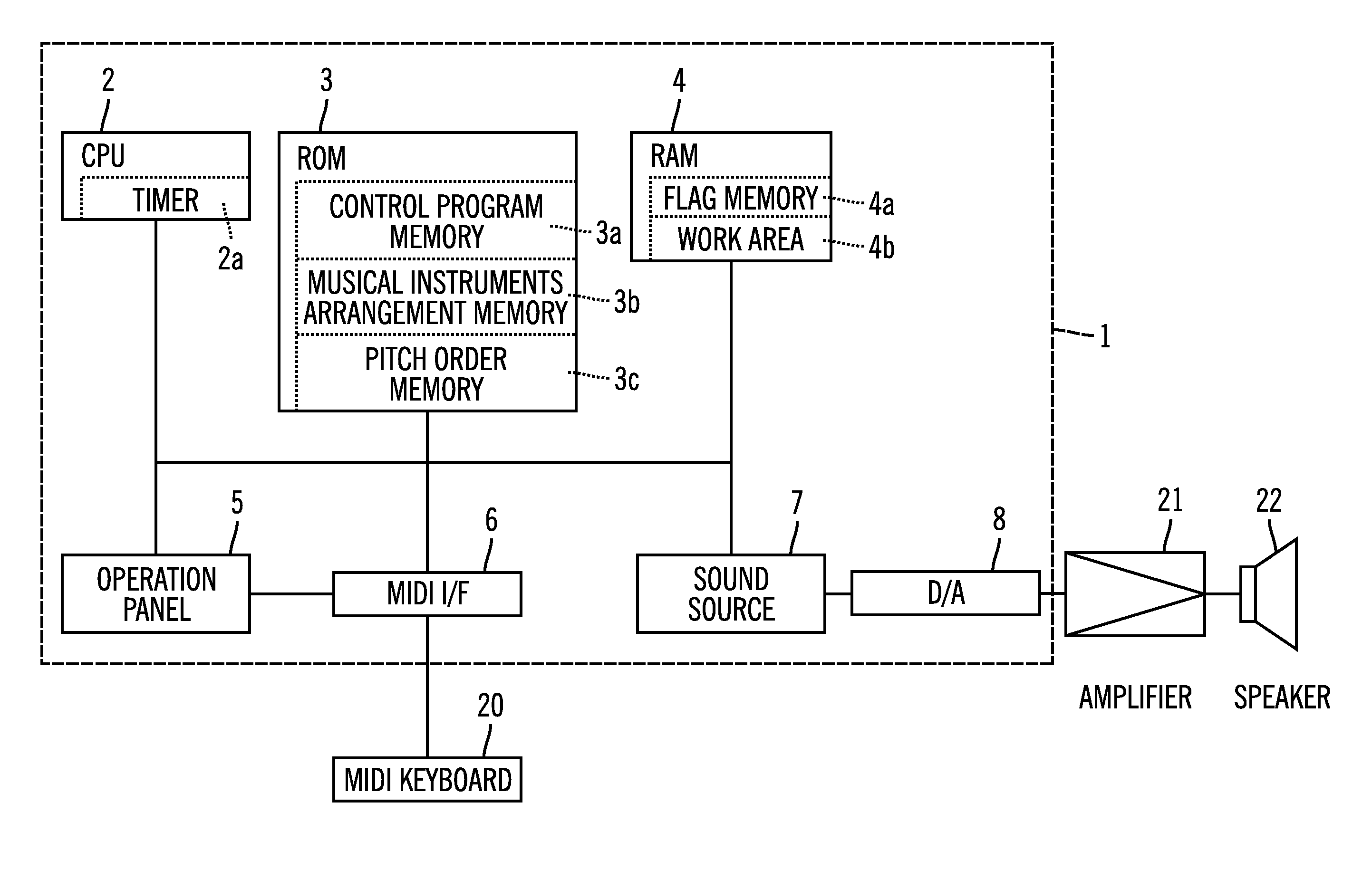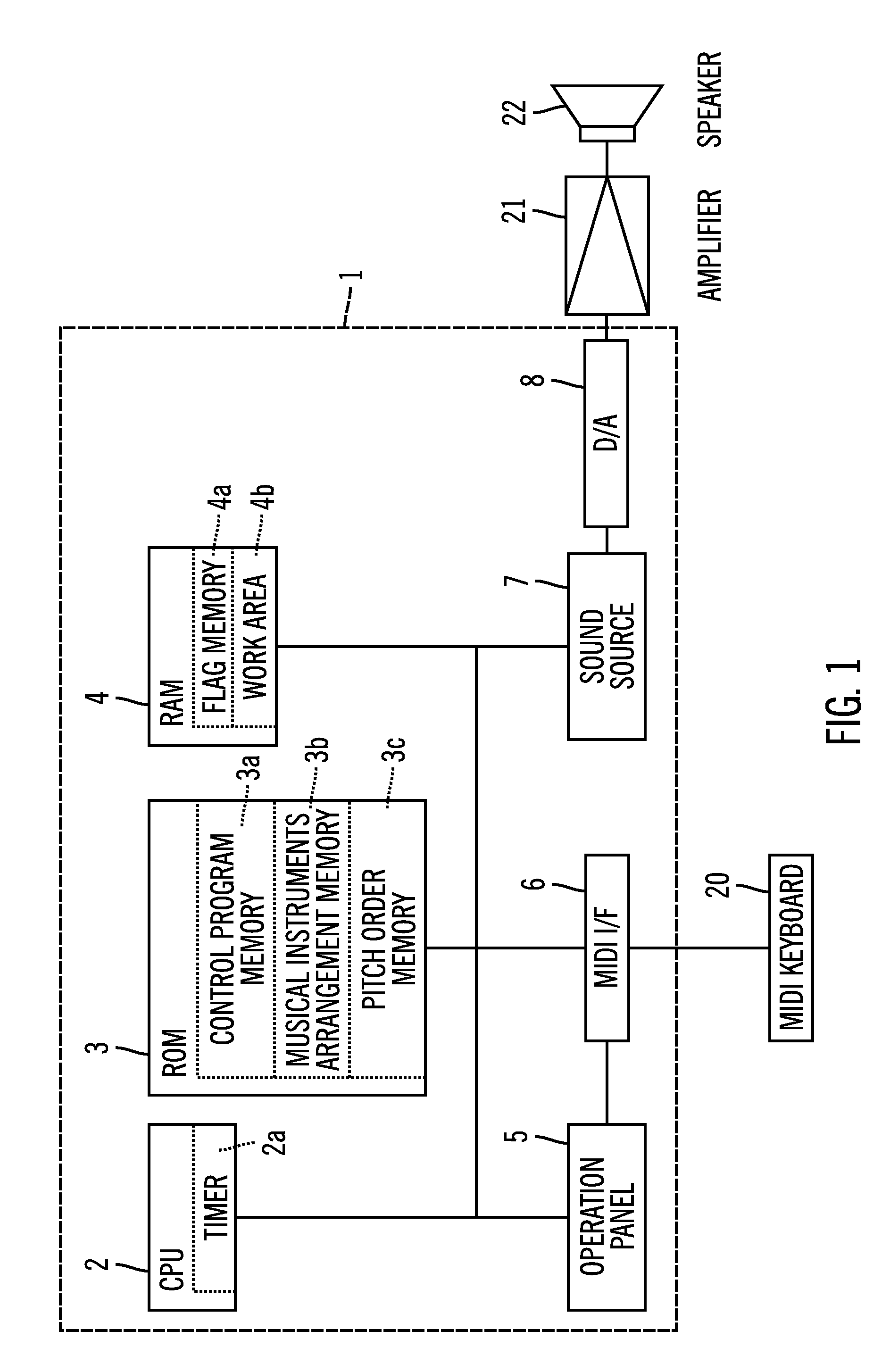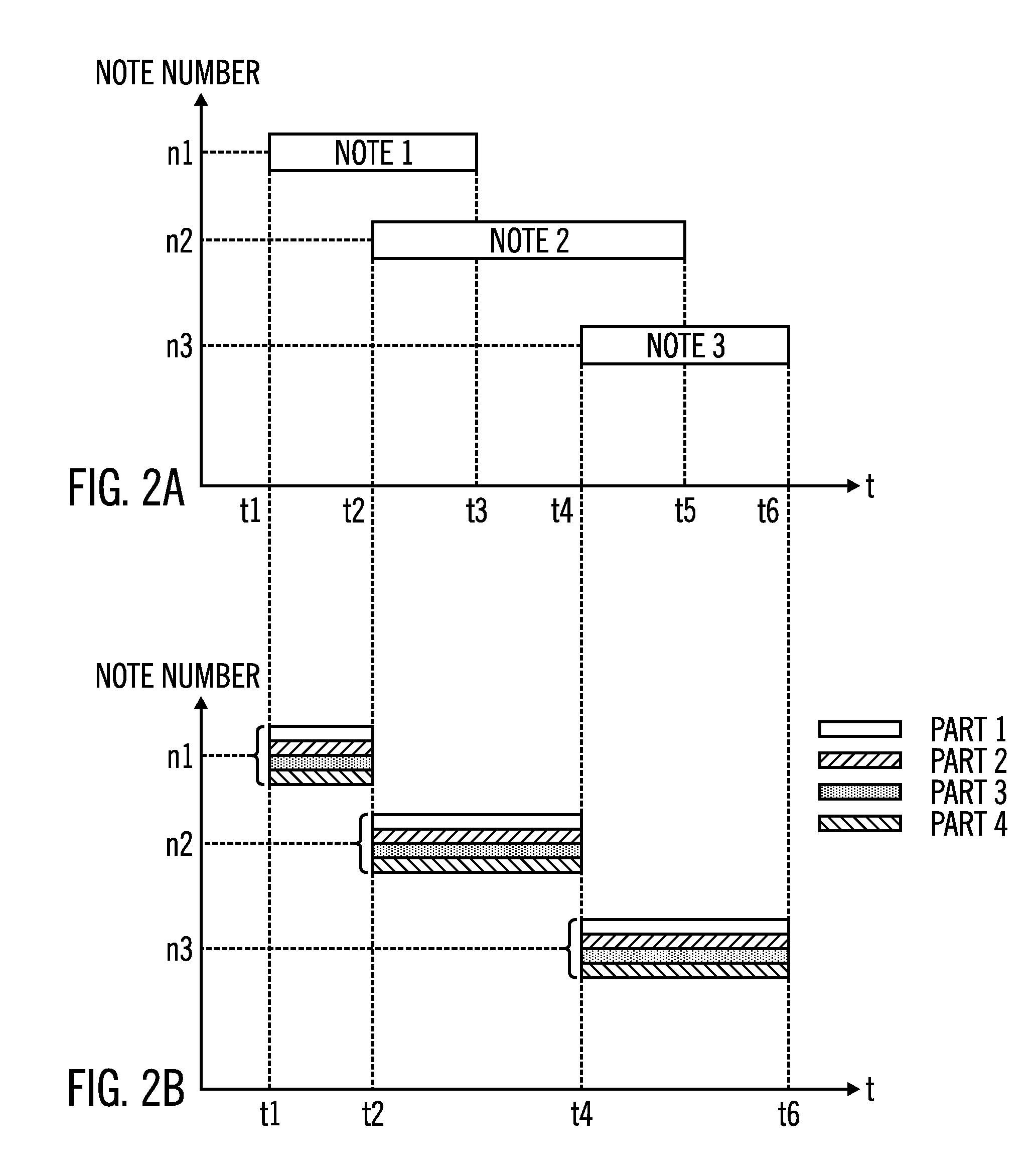Electronic musical instrument
a musical instrument and electronic technology, applied in the field of electronic musical instruments, can solve the problems of unnatural or artificial performance sounds, reduced increased number of performers, so as to reduce the number of parts generating sounds, increase or decrease the effect of parts
- Summary
- Abstract
- Description
- Claims
- Application Information
AI Technical Summary
Benefits of technology
Problems solved by technology
Method used
Image
Examples
first embodiment
[0136] described above, the electronic musical instrument 1 of the invention can switch the mode from Unison 1 to Unison 2 when an on-on time is within the double stop judgment time JT. Therefore, when one of the keys is depressed, the mode is set to Unison 1, wherein all the parts forming a musical instrument arrangement generated sounds at the same pitch. When plural ones of the keys are depressed within a double stop judgment time JT, the mode is set to Unison 2 wherein plural parts forming the musical instrument arrangement are divided and assigned to the plural keys depressed. Therefore it is effective in that, when plural ones of the keys are depressed at the same time like a chord performance, naturally sounding musical sounds can be generated without increasing the number of parts.
[0137]Also, when note-off information of a note is inputted, and the gate time of the note is within a mistouch judgment time MT, it is judged to be a mistouch that is not intended, the mode in Uni...
second embodiment
[0140]According to the method of the second embodiment, when a new key depression occurs, a sound generation continuation time of a key-depressed note that is generating sound is obtained. When the note has a sound generation continuation time that is longer than a reassignment judgment time ST having a predetermined time duration, the note is not subject to reassignment. The reassignment judgment time ST is longer than the double stop judgment time JT, and may be set, for example, at 80 msec.
[0141]FIGS. 11A and 11B show an example of the process described above, which are graphs corresponding to those in FIGS. 3C and 3D. More specifically, FIG. 11A indicates a key depression state similar to that of FIG. 3C, and FIG. 11B indicates a state of musical sounds in accordance with the second embodiment.
[0142]FIG. 11A shows the case where note-on information of Note 1 at pitch n1 is inputted at time t1, note-on information of Note 2 at pitch n2 lower than that of Note 1 is inputted at tim...
PUM
 Login to View More
Login to View More Abstract
Description
Claims
Application Information
 Login to View More
Login to View More - R&D
- Intellectual Property
- Life Sciences
- Materials
- Tech Scout
- Unparalleled Data Quality
- Higher Quality Content
- 60% Fewer Hallucinations
Browse by: Latest US Patents, China's latest patents, Technical Efficacy Thesaurus, Application Domain, Technology Topic, Popular Technical Reports.
© 2025 PatSnap. All rights reserved.Legal|Privacy policy|Modern Slavery Act Transparency Statement|Sitemap|About US| Contact US: help@patsnap.com



